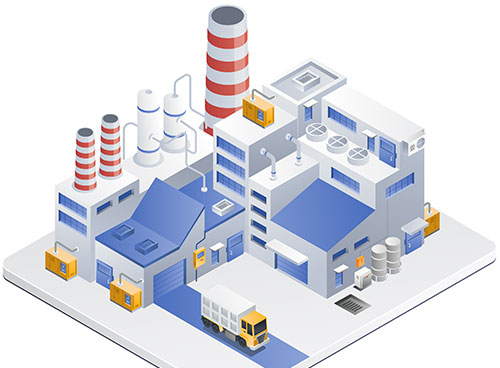In this evolving landscape, clustering distribution centers near manufacturing operations is getting renewed attention as a strategic move in modern supply chain management, especially for food and beverage, textiles, consumer goods, and pharmaceutical companies. This strategy minimizes the gap between production and distribution, leading to improved operational efficiency, cost reduction, lower inventory, and a competitive edge.
A tried-and-tested model is reemerging in which manufacturers understand that goods should be stored as close as possible to where they were made before delivery to customers. When executing a clustering strategy, companies should follow these key steps to be successful:
- Perform a comprehensive financial analysis and create a well-structured budget. Warehousing was only ever separated from manufacturing to save costs. Clustering should also be to save costs. Establishing distribution centers near your manufacturing facilities demands an upfront financial commitment that goes beyond mere dollars and cents. It involves acquiring land, coordinating construction, procuring state-of-the-art equipment, and seamlessly integrating innovative technology. But — before you dismiss this strategy as too costly — consider that the size and location of your distribution center should align with your ambition. Can you afford to let the gap between manufacturing and distribution widen, or should you seize the opportunity to bridge it?
Establishing distribution centers near your manufacturing facilities demands an upfront financial commitment that goes beyond mere dollars and cents. Not all industries can easily embrace this transformation. Industries with specialized and oversized equipment, such as petrochemicals, may encounter significant expenses. In contrast, industries with more manageable equipment and inventory, like textiles, might find the transition more viable. Without a comprehensive financial analysis, where potential savings in transportation and inventory are pitted against the upfront costs of land acquisition and construction, you risk not just delays but also budget overruns that could erode the very benefits you are seeking. - Ensure that the local workforce can meet the demands of both manufacturing and distribution. Labor availability is constantly changing — and a skilled workforce is fundamental to the successful centralization of manufacturing and distribution. Companies must possess the ability to attract and cultivate the skilled labor required to master the intricacies of distribution center operations. This requires a deep understanding of the local talent pool and crafting a strategy that aligns with the community’s demographics.
A multifaceted approach is required to meet the criteria for a skilled workforce. This includes the recruitment of seasoned professionals, the provision of training and development opportunities, and the establishment of a culture that not only attracts talent but also retains it. A skilled workforce is not merely valuable; it is an invaluable asset for the seamless operation of distribution centers located near manufacturing facilities.
Labor availability is constantly changing — and a skilled workforce is fundamental to the successful centralization of manufacturing and distribution.
- Assess the existing transportation infrastructure. Clustering distribution centers near manufacturing can only yield its full benefits if transportation and connectivity are both reliable and efficient. Challenges like traffic congestion, insufficient road infrastructure, and unreliable public transportation can disrupt the smooth flow of goods and materials between manufacturing and distribution centers, directly impacting the supply chain. When considering the clustering strategy, assessing transportation infrastructure and costs is essential. Companies should evaluate the adequacy of transportation infrastructure to ensure the efficient and cost-effective movement of goods. Depending on the location, this may involve seeing if there are adequate roads, railways, or ports nearby. Overlooking the evaluation of transportation costs can result in delays and increased expenditure.
Clustering distribution centers near manufacturing facilities is a promising strategy for companies seeking to optimize their supply chains. It offers numerous advantages, including reduced transportation costs, quicker response to market demands, improved inventory management, and a more environmentally sustainable footprint. However, implementing this strategy requires meticulous financial planning and analysis. Companies must thoroughly evaluate real estate expenses, labor requirements, transportation infrastructure, and scalability to ensure a seamless transition and to fully reap the long-term benefits. For leaders, it requires the same courage to invest in and commit to improvement as those who built today’s industries. After all, the pursuit of operational excellence is a constant.
